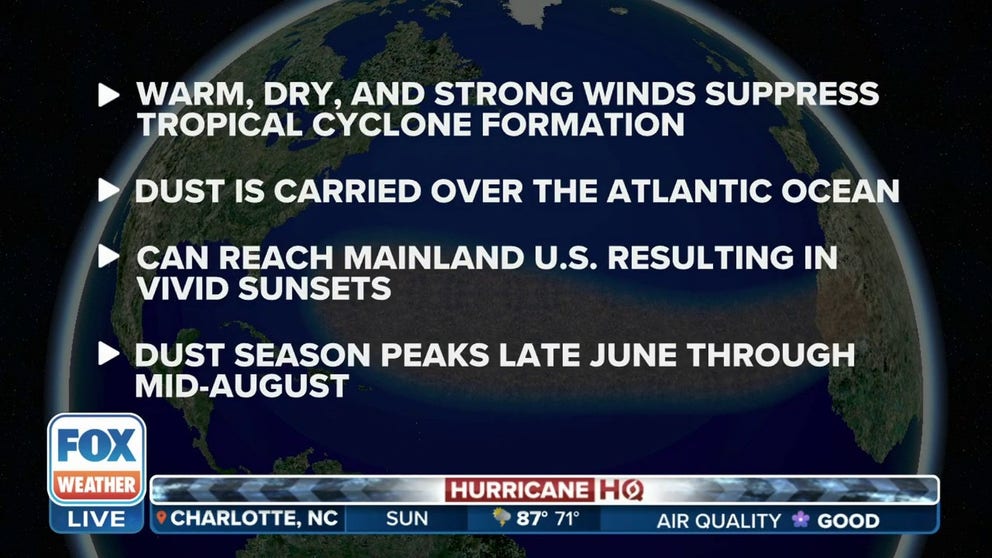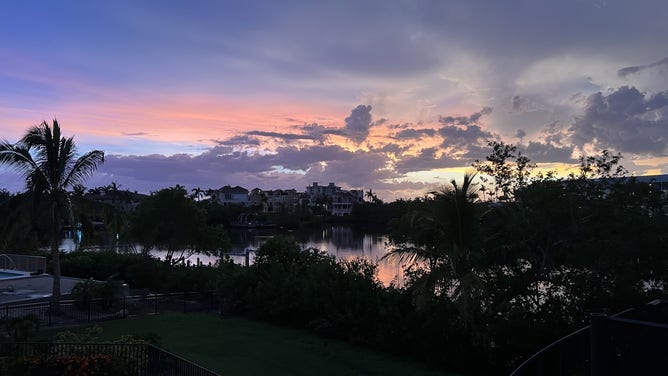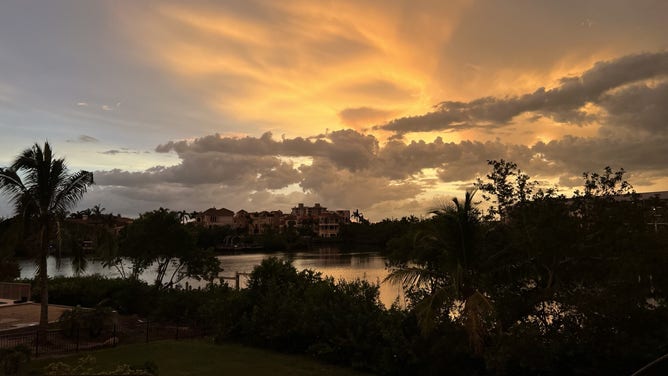Most significant Saharan dust plume of season impacting Texas, Gulf Coast
The Saharan Air Layer (SAL) from Africa can reduce tropical activity across the Atlantic basin. NOAA says the base of a dust plume is typically a mile above Earth’s surface and can be a couple of miles thick.
Saharan dust helping to limit tropical activity in the Atlantic
Plumes of Saharan dust that pushed off Africa are impacting Florida and Texas. Those plumes of dust will help to hinder tropical development in the Atlantic Ocean.
A plume of dust from the Sahara Desert in Africa is impacting much of the Gulf Coast and will continue through the early part of the week, leading to lower rain chances, vibrant sunsets and sunrises, reduced air quality readings and hot temperatures.
Encounters with the Saharan Air Layer are common during the summer months, as the dust pushes off Africa and makes its way across the Atlantic Ocean.
Southern Florida has experienced several plumes of dust this season, with the latest event being driven west and northwestward by the prevailing winds. The dust moves west late week and hovers over Texas.
FOX Weather’s dust tracker shows coastal communities such as Corpus Christi, Houston and Galveston seeing their first significant plume of the year this week.
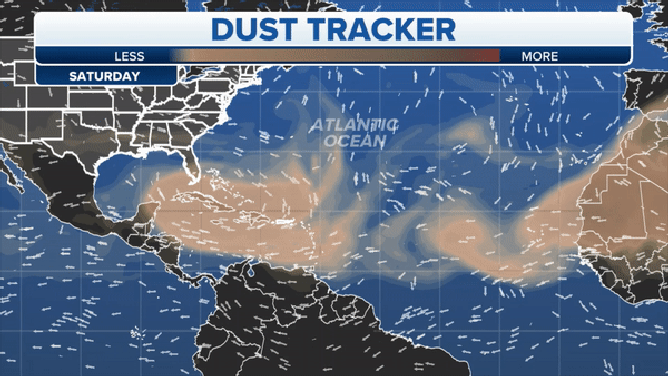
US Dust Tracker
(FOX Weather)
5 THINGS TO KNOW ABOUT THE SAHARAN DUST PLUME
According to the Texas Commission on Environmental Quality, poorer air quality readings are expected in the Lone Star State, especially mid-week when the dust could be its thickest. The FOX Forecast Center said that due to the particles being suspended higher up in the atmosphere, the events do not typically trigger unhealthy or hazardous readings.
While the effects on air quality are minimal, the dust could produce some colorful sunrises and sunsets and reduce precipitation chances. According to NOAA, the air surrounding the dust plume has 50% less moisture than the typical atmosphere, which means the presence of the SAL can be detrimental to cloud formation and thunderstorm activity.
Temperatures can stay high without cooling afternoon rains.

(FOX Weather)
More than 180 million tons of dust leave the African continent annually and is highly dependent on weather patterns across the desert.
As weather patterns change during the late summer and fall, encounters with Saharan dust become less common across North America.
According to medical experts at WebMD, eye, nose and throat irritations are possible when there are outbreaks of fine dust particles in the air.
WHEEZING AND SNEEZING? IT COULD BE SAHARAN DUST
During episodes of dust, the tropics in the Atlantic’s main development region are usually quiet as the dry air hinders tropical cyclone development. The particles are typically one of the hindrances tropical systems face during the first three months of the hurricane season.
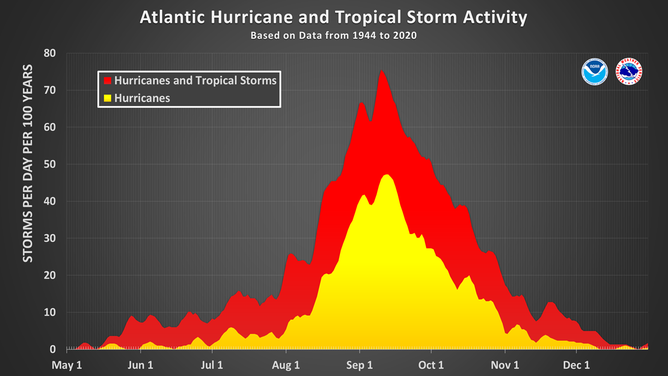
This chart shows the amount of tropical cyclone activity, in terms of named storms and hurricanes, that occurs in the Atlantic Basin on each calendar day between May 1 and Dec. 31. Specifically, it shows the number of hurricanes (yellow area) and the combined named storms and hurricanes (red area) that occur on each calendar day over a 100-year period. The chart is based on data from the 77-year period from 1944 to 2020 (starting at the beginning of the aircraft reconnaissance era) but normalized to 100 years. The official hurricane season for the Atlantic Basin is from June 1 to Nov. 30, but tropical cyclone activity sometimes occurs before and after these dates, respectively. The peak of the Atlantic hurricane season is Sept. 10, with most activity occurring between mid-August and mid-October.
(National Hurricane Center / NOAA)
Next weekend shows the dust clearing out of Florida and settling out of Texas air. But another massive slug of dust is coming off of Africa, heading to the U.S. for the start of August.
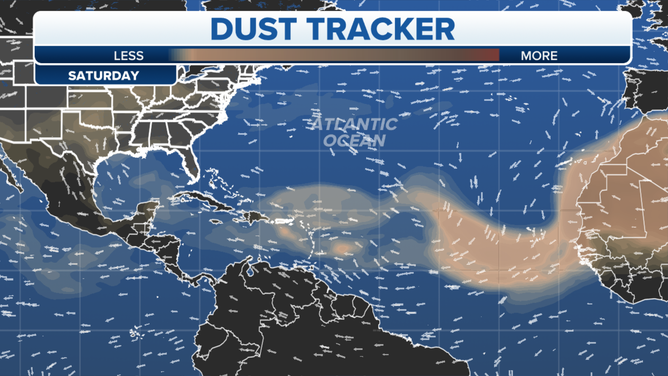
The Saharan dust forecast for Saturday July 29.
(FOX Weather)
